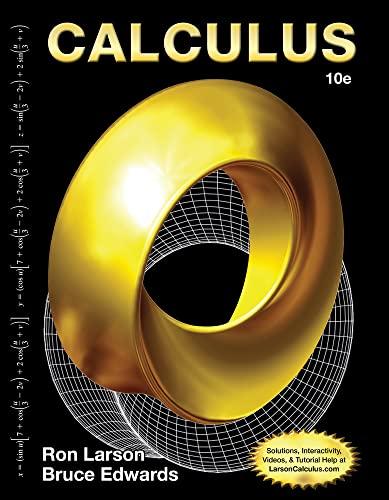Determine whether the statement is true or false. If it is false, explain why or give an
Question:
Determine whether the statement is true or false. If it is false, explain why or give an example that shows it is false.
If ƒ(x, y) ≤ g(x, y) for all (x, y) in R, and both ƒ and g continuous are over R, then ∫R ∫ ƒ(x, y) dA ≤ ∫R ∫ ƒ(x, y) dA.
Fantastic news! We've Found the answer you've been seeking!
Step by Step Answer:
Related Book For 

Question Posted:





